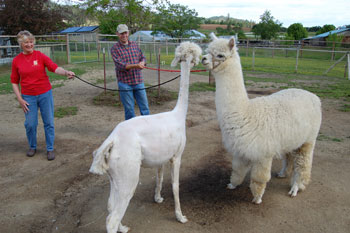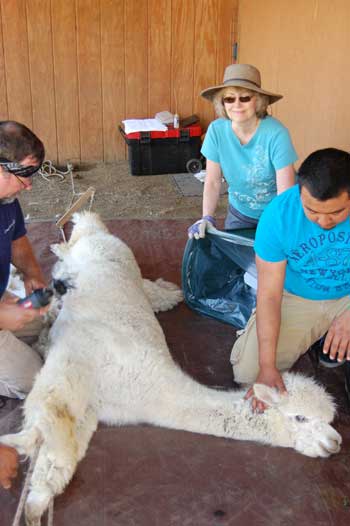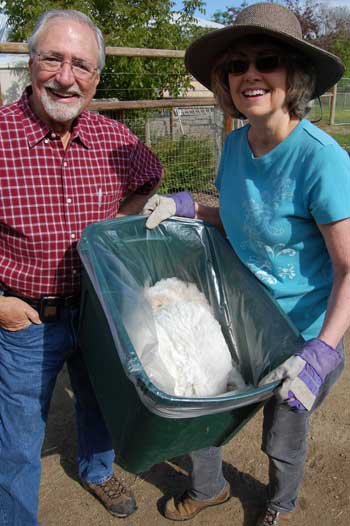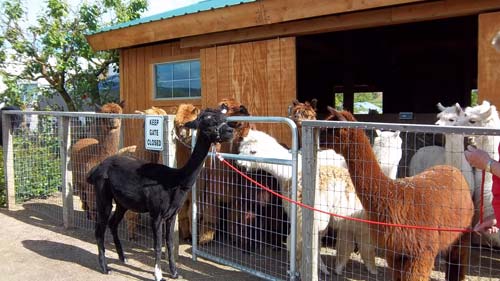June 5th was Shearing Day at Rolling Hills Alpacas, 970 Old Stage Road. The proprietors, Jeanne and Jim Davidian, hosted a fun and exciting day. If you missed it this year, please catch this annual event next year!
The shearing process starts by leading the alpacas one-by-one from the field to the barn using a harness and lead.
The animals must lie down for the shearing, so their legs are secured with ropes and it’s a quick “1-2-3, pull” with helpers acting in unison to minimize stress on the animal.
The alpacas love to be rid of all that extra warmth after their coats are sheared, but some animals are anxious during the shearing. Each animal reacts a bit differently because they each have different personalities, just like people.
The shearer then works fast clipping the animal as he announces the quality of the fur, which is called fiber. Helpers segregate the fiber by quality and place it in pre-labeled plastic bags. The identification on the bag includes the alpaca’s name.
The fiber is then set aside to be spun and made into apparel. How much fun to buy a hat made from a specific animal you visited at the alpaca farm!
The best fiber is from the back and upper side of the animal. It is called the blanket and is handled gingerly when removed from the animal to keep it neat.
The lesser quality fiber is on the belly and you can even get that for free for uses like stuffing dog beds.
You can stop by Rolling Hills Alpacas in the next few days to see the freshly sheared fiber in bags and to see the freshly shaved animals in the field. The weather forecast looks promising!
Click here for a fun, short video of the process!
Five alpacas are pregnant so look for babies over the next few weeks.






It was a fun day for all but a few alpacas. Today, the day after, they are all basking in the sun and rolling in the cool grass. Loving every munite of it.
That alpaca sure got a purty neck…
Hello!
I was wondering what the date for the alpaca shearing fun is this year? We would LOVE to be a part of it!
Thank you!
Sincerely,
Marisa
Hi there: This article was posted in 2011 – for current information, please see their website: http://www.capricevineyards.com/